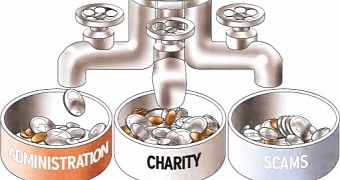Any report of a major disaster occurring anywhere in the world is quickly exploited by crooks, and the earthquake in Nepal is not likely to make an exception.
Given the wide coverage from the media and authorities engaging in relief efforts for the people affected, cybercriminals are expected to take steps to make some money for themselves.
The deceit can take multiple guises
Crooks would stop at nothing to steer unsuspecting users to fraudulent donation websites or to trick them into installing malware on their systems relying on messages claiming to deliver new details about the disaster.
The bait can be sent via all forms of modern communication, from social networking websites to emails, messaging apps, and mobile SMS.
The San Diego division of the FBI issued a warning this week, providing a list of guidelines that should prevent users from falling victim to deceits.
One piece of advice from the FBI is to refrain from replying to unsolicited email or clicking on any of the links they may include because they could lead to malicious software. Alternatively, they could claim to deliver fresh pictures from the locations affected by the earthquake.
Another risk is landing on a phishing site impersonating a donation center, where the potential victim is asked for card data to give money for the helping cause.
Pay close attention to the name of charity organizations
“Be cautious of individuals representing themselves as victims or officials asking for donations via e-mail or social networking sites,” the FBI warns.
“Beware of organizations with copycat names similar to but not exactly the same as those of reputable charities,” reads another recommendation.
On the same note, individuals should avoid making cash donations as much as possible, and resort to checks or credit/cards. This way, if the money reaches an impostor, there is a trail and the chances for the perp to be caught increase.

 14 DAY TRIAL //
14 DAY TRIAL //